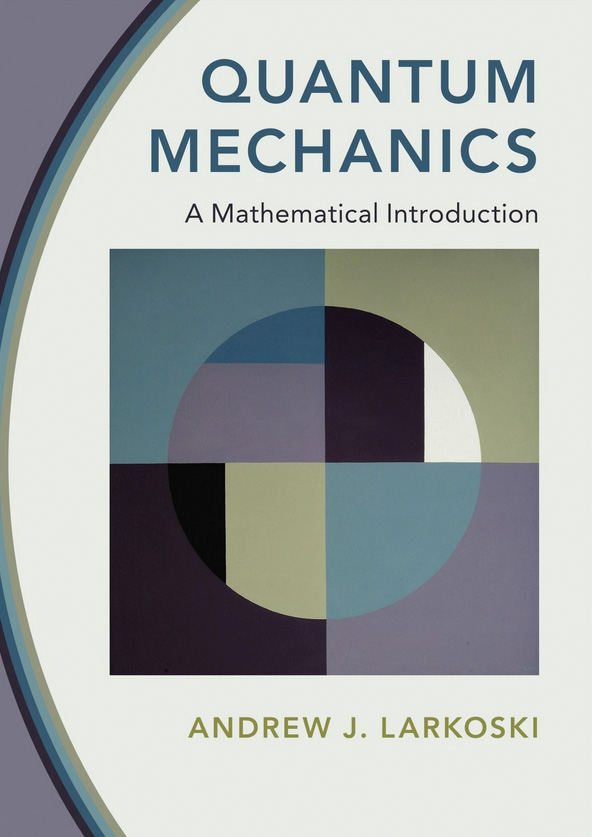Quantum Mechanics: A Mathematical Introduction, by Andrew Larkoski, Cambridge University Press

Andrew Larkoski seems to be an author with the ability to write something interesting about topics for which a lot has already been written. His previous book Elementary Particle Physics (2020, CUP) was noted for its very intuitive style of presentation, which is not easy to find in other particle-physics textbooks. With his new book on quantum mechanics, the author continues in this manner. It is a textbook for advanced undergraduate students covering most of the subjects that an introduction to the topic usually includes.
Despite the subtitle “a mathematical introduction”, there is no more maths than in any other textbook at this level. The reason for the title is presumably not the mathematical content, but the presentation style. A standard quantum-mechanics textbook usually starts with postulating Schrödinger’s equation and then proceeds immediately to applications on physical systems. For example, the very popular Introduction to Quantum Mechanics by Griffiths and Schroeter (2018, CUP) introduces Schrödinger’s equation on the first page and, after some discussion on its meaning and basic computational techniques, the first application on the infinite square well appears on page 31. Larkoski aims to build an intuitive mathematical foundation before introducing Schrödinger’s equation. Hilbert spaces are discussed in the context of linear algebra as an abstract complex vector space. Indeed, space is given at the very beginning for ideas, such as the relation between the derivative and a translation, that are useful for more advanced applications of quantum mechanics, for example in field theory, but which seldom appear in quantum-mechanics textbooks so early. Schrödinger’s equation does not appear until page 58, and the first application in a system (which, as usual, is the infinite square well) appears only on page 89.
The book is concise in length, which means that the author has had to carefully choose the areas that are beyond the standard quantum-mechanics material covered in most undergraduate courses. Larkoski’s choices are probably informed by his background in quantum field theory, since path integral formalism features strongly. Perhaps the price for keeping the book short is that there are topics, such as identical particles or Fermi’s golden rule, that are not covered.
Some readers will find the book’s style of delaying a mathematical introduction unnecessary and may prefer a more direct approach to the topic, which might also be related to the duration of the teaching period at university. I would not agree with such an assessment. Taking the time to build a basis early on helps tremendously with understanding quantum mechanics later on in a course – an approach that it is hoped will find its way to more classrooms in the near future.








